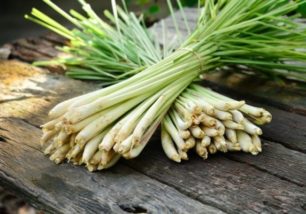AROMATIC WATER OR FLORAL WATERS: WHAT ARE THEY?
cosmeticsessential oilhydrolatsteam diatillation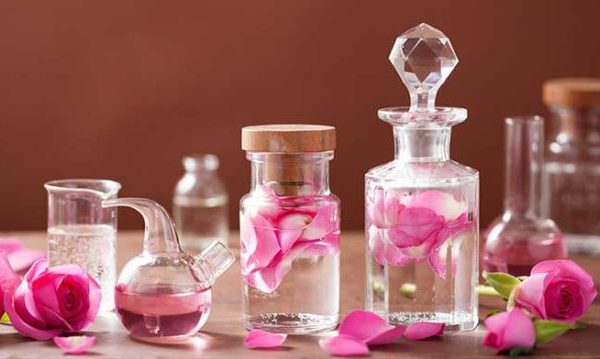
The vapor current distillation is a technique that allows the extraction of essential oils from the plant tissue, through their transport by vapor steam. At the end of this process we always obtain two important products: essential oil and aromatic or floral water.
The essential oil is certainly the finest and most used product of the distillation, but this does not mean that aromatic water cannot have as many benefits and uses.
Famous and widely used up to the mid ‘700, hydrolats (another term used to indicate aromatic or floral waters) were then abandoned. Except for a few aromatic waters such as those obtained from the distillation of orange flowers or rose petals, which remained famous for traditional and commercial purposes; the other aromatic waters were just considered processing waste.
Recently rediscovered, these waters, with a sweet scent, possess properties not only pleasing for their aroma, but also beneficial and useful.
But what exactly are hydrolats?
During the distillation process, some hydrosoluble (soluble in water) or partially soluble molecules dissolve into the steam, which draws the essential oil out of the vegetable tissue and remain in solution in distilled water. Their concentration is very low (rarely more than 1%), but sufficient to perfume the water and to exert certain effects.
The chemical composition of the hydrolat is clearly different from that of the essential oil. In fact, aromatic or floral waters will mainly present oxygenated compounds (characterized by the presence of oxygen atoms), as they are more soluble in water.
It is clear that the more volatile fraction of an aromatic plant is characterized by oxygenated compounds, the more the hydrolat will be perfumed. This explains why the aromatic waters of plants such as Rosemary, Lavender, Thyme, Sage, etc. have a much more intense fragrance than those obtained from the distillation of a conifer like pine or fir.
These molecules, in addition to giving a delicate and pleasant fragrance to the hydrolat, can clearly give to it numerous properties (antiseptic, antifungal, cicatrizing, soothing, refreshing …).
Thanks to their soothing and comforting properties, aromatic waters can be very useful for treating the skin, which is why they are used in the natural cosmetic industry. They can be often found in tonic or facial cleansers, but also creams and body milks, where they replace the normal distilled water (which constitutes 80% of a cosmetic product). This way they can enrich the cosmetic product easily and safely.
It should be stressed, however, that unlike essential oils (which due to their particular chemical composition and natural antiseptic properties do not require any preservative), hydrolats being mainly water with a small amount of volatile compounds, are easily contaminated by microorganisms.
If not used in a short time after the distillation process, it is important to add appropriate preservatives to the hydrolat or safely restore them through the bottling process (as happens for bottled mineral waters). Instead, those who love do-it-yourself distillation will be able to assure themselves a self-made and safe small personal production of aromatic water always fresh …
But what are the uses of hydrolats?
Let’s see some simple use together:
Hydrolats are excellent substitutes for demineralized water normally used in ironing. In addition to ensuring excellent use to the iron they give a pleasant smell to the fabrics and make a not so pleasant chore more enjoyable thanks to the aroma that eminates in the air. For this purpose, it is possible to use Lavender as well as citrus fruit, marjoram or mint aromatic waters.
Hydrolats are excellent for essence burners or ultrasonic diffusers. In order to have a more delicate effect in the home environment, for example, in the presence of children or animals, it is possible to replace the essential oil with the hydrolat alone. Pour it directly into the essence burner or even in the radiator humidifier. Depending on the benefit and the desired effect, aromatic water of different plants can be used with relaxing (Lavender, Mandarin, Lemon Balm …), tonic (Basil, Lemon, Mint …) or balsamic properties (Pine, Eucalyptus, Rosemary …)
Another very interesting use is for culinary purposes. For those who love essential oils in the kitchen or are experienced in this area but do not yet know all the carriers and the correct dosages of use, it may be useful and interesting to start experimenting with some drops of aromatic water. Rosemary, Thyme, Oregano, Savory, Basil … are excellent aromatics for flavoring sauces, risottos, desserts, etc. …
Another very simple, convenient and effective use of aromatic waters can be to use them on the skin, as they are refreshing, toning and moisturizing. They can be poured on a cotton swab to apply on the skin or sprayed directly by convenient spray dispensers. For this purpose, the most famous surely are rose, orange flower, and American witch hazel waters. But also those of Lavender, Achillea, Chamomile, Lemon balm and helichrysum are useful and effective.
Now we have to rediscover and experience all the results of distillations, enjoying the many benefits not only of essential oils, but also of their amazing aromatic waters.
Other articles that may interest you:
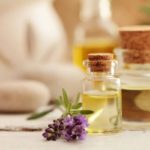 ESSENTIAL OILS: WELLNESS IN HOME
ESSENTIAL OILS: WELLNESS IN HOME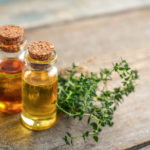 THYME ESSENTIAL OIL: USES AND PROPERTIES
THYME ESSENTIAL OIL: USES AND PROPERTIES AROMATHERAPY: HOW TO CHOOSE AN ESSENTIAL OIL
AROMATHERAPY: HOW TO CHOOSE AN ESSENTIAL OIL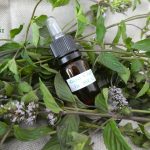 HOW TO DISTILL MINT
HOW TO DISTILL MINT AROMATHERAPY: HISTORY
AROMATHERAPY: HISTORY POTATO CHIPS WITH ROSEMARY AROMATIC WATER
POTATO CHIPS WITH ROSEMARY AROMATIC WATER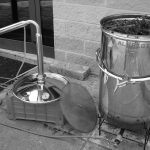 ROSEMARY ESSENTIAL OIL: CULTIVATION AND PRODUCTION
ROSEMARY ESSENTIAL OIL: CULTIVATION AND PRODUCTION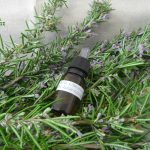 HOW TO DISTILL ROSEMARY
HOW TO DISTILL ROSEMARY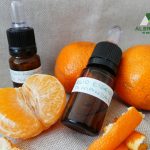 HOW TO DISTILL TANGERINE PEEL
HOW TO DISTILL TANGERINE PEEL NEEM OIL, FROM THE PLANT OF GOOD HEALTH
NEEM OIL, FROM THE PLANT OF GOOD HEALTH HERBAL TEAS, INFUSIONS AND DECOCTIONS: THE DIFFERENCES AND METHODS OF PREPARATION
HERBAL TEAS, INFUSIONS AND DECOCTIONS: THE DIFFERENCES AND METHODS OF PREPARATION HOW TO MAKE HOMEMADE ESSENTIAL OILS
HOW TO MAKE HOMEMADE ESSENTIAL OILS HEALTHY HAIR WITH AROMATIC PLANTS
HEALTHY HAIR WITH AROMATIC PLANTS THE GOOD NIGHT PLANTS
THE GOOD NIGHT PLANTS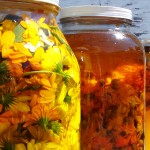 OLEOLITES: THE POWER OF HERBS IN OIL
OLEOLITES: THE POWER OF HERBS IN OIL ENFLEURAGE: ANCIENT TECHNIQUE TO EXTRACT ESSENCES FROM FLOWER PETALS
ENFLEURAGE: ANCIENT TECHNIQUE TO EXTRACT ESSENCES FROM FLOWER PETALS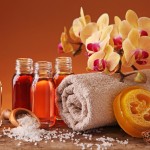 ESSENTIAL OILS AND ECOLOGICAL DETERGENTS FOR HOUSE CLEANING
ESSENTIAL OILS AND ECOLOGICAL DETERGENTS FOR HOUSE CLEANING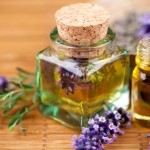 OIL FOR STRENGTHENING HAIR
OIL FOR STRENGTHENING HAIR SCENTED BAGS WITH DRIED HERBS AND ESSENTIAL OILS
SCENTED BAGS WITH DRIED HERBS AND ESSENTIAL OILS PURIFYING AND CLEANSING HERBAL TEAS DO-IT-YOURSELF
PURIFYING AND CLEANSING HERBAL TEAS DO-IT-YOURSELF LEMONGRASS: ESSENTIAL OIL TO FIGHT TUMORS
LEMONGRASS: ESSENTIAL OIL TO FIGHT TUMORS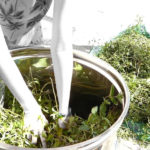 MINT ESSENTIAL OIL: CULTIVATION AND PRODUCTION
MINT ESSENTIAL OIL: CULTIVATION AND PRODUCTION CITRUS FRUITS AND ALZHEIMER’S DISEASE: NEW DISCOVERIES
CITRUS FRUITS AND ALZHEIMER’S DISEASE: NEW DISCOVERIES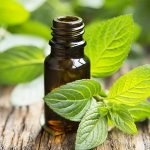 MINT ESSENTIAL OIL: USES AND PROPERTIES
MINT ESSENTIAL OIL: USES AND PROPERTIES
